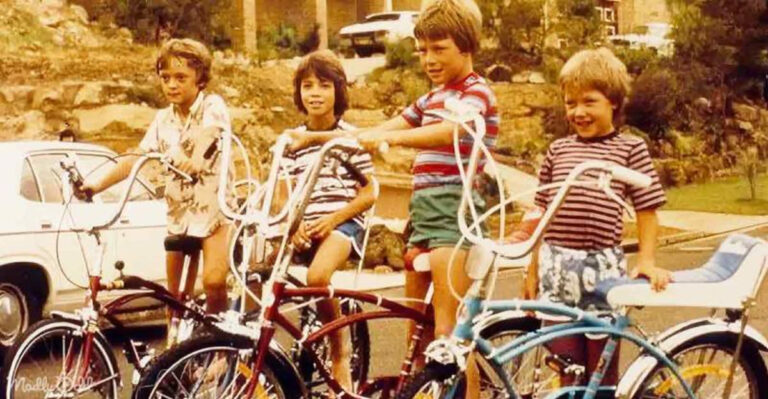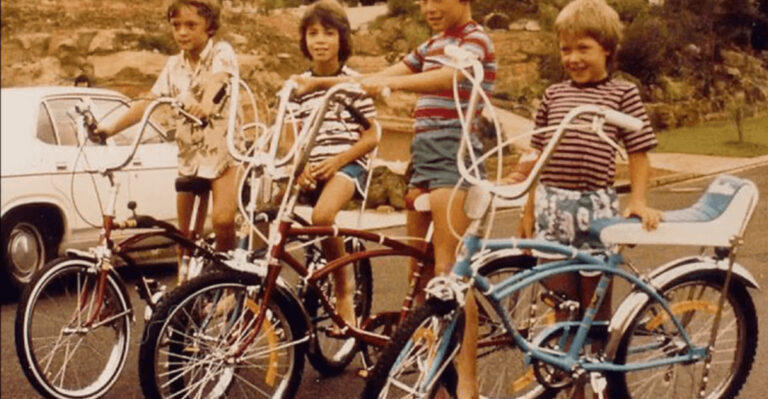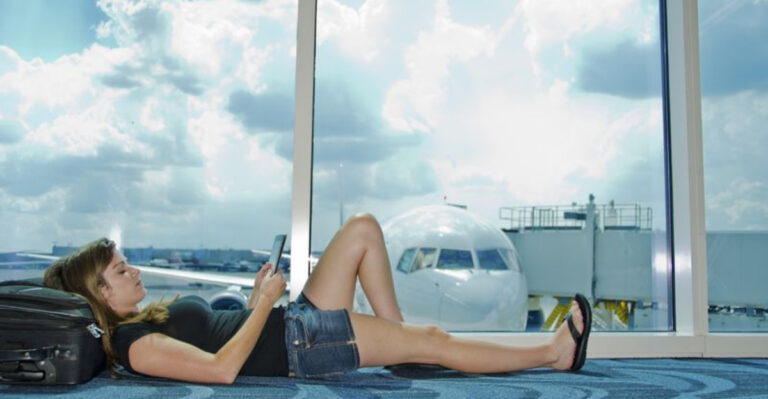42 Vintage Photos That Capture What Life Was Like For Women In The 1920s
The 1920s weren’t just flappers and fringe. They were a revolution in heels.
This was the decade women cut their hair, raised their hemlines, lit their own cigarettes, and claimed space in public life in a way they never had before. From jazz clubs to voting booths, college campuses to factory floors, women in the 1920s were rewriting the rules.
These 40 vintage photos offer a striking window into that iconic era—when tradition clashed with rebellion, and women embraced both elegance and edge.
1. Women in flapper dresses laughing in a New York speakeasy, 1923

In the heart of New York City, the speakeasy scene was alive with the sound of jazz and laughter. Picture three young women, dressed in fringed flapper dresses, embodying the spirit of the Roaring Twenties. Their laughter echoes through the dimly lit room, mingling with the clinking of glasses and the smooth tunes of a jazz band.
These women weren’t just dressing up; they were making bold statements about freedom and self-expression. The flapper dress, with its loose fit and rebellious fringe, symbolized a break from tradition. For them, every night was a celebration of newfound independence.
2. A rebellious “bob” haircut in progress at a Paris salon, 1926

In a chic Parisian salon, a young woman sits with anticipation as her long locks fall to the floor. The bob haircut, a daring choice of the era, represented much more than a fashion statement. It was a symbol of liberation, a cutting away of the old and embracing the new.
The stylist moves with precision, transforming her client’s hair into a sleek, modern bob. For women in the 1920s, this haircut was more than a style; it was a declaration of autonomy and a rejection of societal norms that dictated femininity. The bob was bold, and so were they.
3. Young women learning the Charleston in Chicago, 1925

In a lively dance studio in Chicago, a group of young women kick up their heels, mastering the Charleston. This dance, with its exuberant moves and syncopated rhythms, captured the essence of the Jazz Age. The women, dressed in comfortable attire allowing for freedom of movement, mirror each other’s steps with infectious enthusiasm.
The Charleston wasn’t just a dance; it was a cultural phenomenon that united women in joy and defiance. For these dancers, every step was a celebration of spirit and a push against the rigid conventions of the past. The floor vibrated with their energy.
4. Flappers protesting corsets outside a department store, 1921

On a bustling city street, a group of flappers gathers, holding signs that speak volumes: ‘No More Corsets!’ These young women, bold and unyielding, stand in protest outside a grand department store. The corset, once a symbol of femininity, had become an emblem of constraint.
These flappers were rejecting the discomfort and embracing a more liberated way of life. The protest was not just about fashion; it was about freedom and autonomy over their bodies. Their voices, though small, were part of a larger chorus demanding change and equality in a society slow to embrace it.
5. Stylish friends posing with their Model T Ford, 1924

In the sun-dappled glow of a 1924 afternoon, two stylish women lean effortlessly against their pride and joy—a shiny Model T Ford. Their outfits, a blend of sophistication and modernity, complement the sleek lines of the car. With a nod to the future, these women were embracing the mobility and freedom that automobiles promised.
The Model T wasn’t just a car; it was a symbol of independence, allowing women to chart their own paths and explore new horizons. The photograph captures not just a moment, but a movement toward autonomy and adventure.
6. Beach fashion—loose swimsuits and bold confidence, 1927

On the sandy shores of a 1927 beach, a group of women revels in the sun, their loose-fitting swimsuits a testament to fashion’s shift toward comfort and practicality. Gone are the restrictive, heavy garments of the previous decades. Instead, these women embrace swimsuits that allow them freedom of movement, reflecting a broader shift in societal norms.
Their smiles and relaxed postures exude bold confidence, challenging traditional notions of modesty. The beach becomes a playground of liberation and self-assurance, where women could enjoy life uninhibited by the constraints of outdated fashion.
7. A flapper girl smoking in public—then a shocking act, 1922
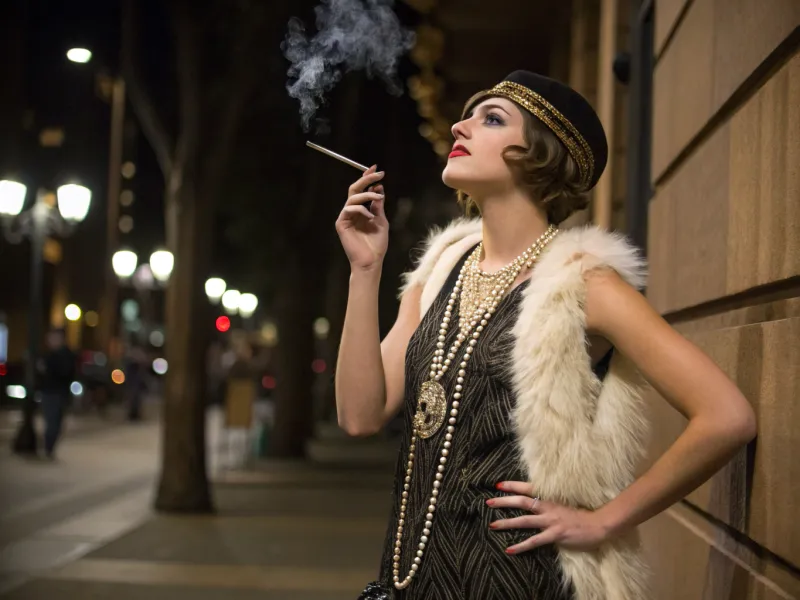
In a 1922 urban setting, a young flapper strikes a pose, cigarette in hand. Her act, seemingly ordinary today, was a bold statement of defiance and independence back then. Smoking in public, once considered scandalous for women, became a symbol of rebellion against societal norms.
This flapper, with her bobbed hair and daring attitude, epitomized the new woman—unapologetic, confident, and ready to claim her place in the world. The simple act of smoking was more than just a habit; it was a declaration of self-determination and a challenge to the status quo.
8. Two women in matching cloche hats and silk gloves, London, 1928
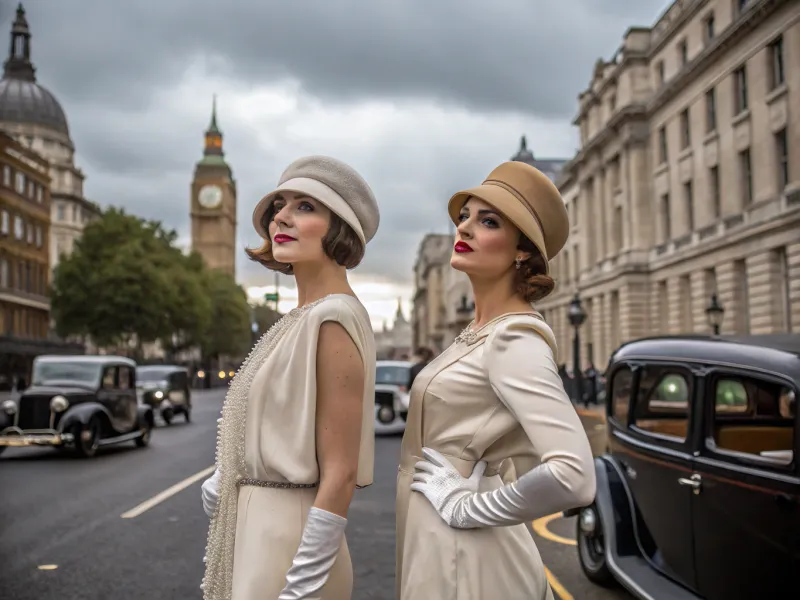
In the bustling streets of 1928 London, two women walk side by side, their cloche hats and silk gloves epitomizing the elegance of the era. Their coordinated outfits reflect a keen sense of style, a hallmark of the fashionable woman of the 1920s.
The cloche hat, snug and chic, was a staple, accentuating the bobbed hairstyles that had become so popular. These women, with their poised demeanor, embody the sophisticated yet modern spirit of the time. Fashion was more than aesthetics; it was a way for women to express their individuality and confidence.
9. Jazz-loving flappers dancing barefoot at a summer garden party, 1929

In the warm embrace of a 1929 summer evening, the air is alive with the joyful sounds of a garden party. Flappers, with their carefree spirits, dance barefoot on the grass to the lively beats of jazz music. Their laughter is infectious, their movements uninhibited by the constraints of shoes or societal expectations.
This scene, a vibrant tapestry of youth and freedom, captures the essence of the Roaring Twenties. For these women, dancing was not just an activity but a joyful expression of life, a celebration of their identity and their era.
10. A flapper flipping the bird—literally and historically iconic, 1926

In a moment both cheeky and profound, a young flapper raises her hand in a gesture that would become iconic. In 1926, this act of flipping the bird was more than just a rebellious pose; it was a statement of defiance. The flapper, with her bold style and irreverent attitude, challenged the constraints of a society trying to dictate her place.
Her actions, captured in this candid moment, speak volumes about the era’s spirit of rebellion and change. This photograph is not just a snapshot in time; it’s a symbol of the audacity and courage of a generation.
See also: 32 Fascinating Ways Women Had Fun in the 1950s Before Social Media Existed
11. Factory women rolling cigarettes on the line, 1920
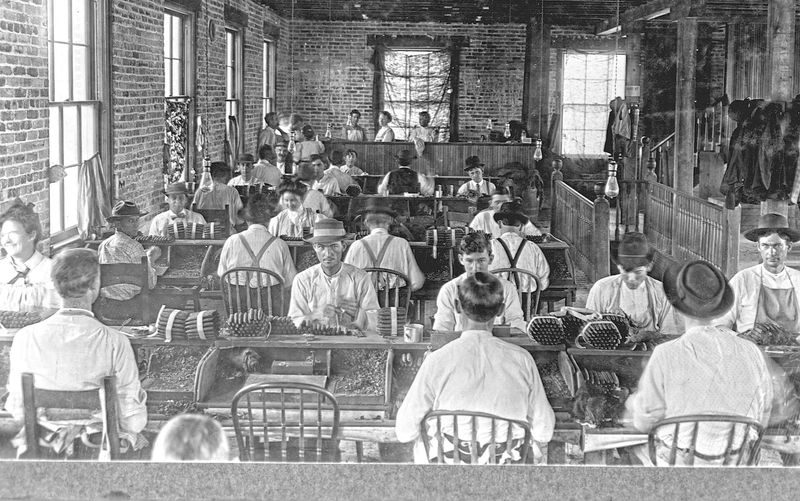
Amid the hum of machinery in a 1920 factory, a group of women stands shoulder to shoulder, rolling cigarettes with practiced precision. This scene, a testament to the working-class women’s resilience, reflects the broader socio-economic shifts of the era.
As World War I reshaped industries, women entered the workforce in unprecedented numbers, taking on roles previously reserved for men. The cigarette line, with its rhythmic flow, symbolizes both the monotony and opportunity of factory work. These women, through their labor, contributed to the changing landscape of women’s roles in society.
12. A female cab driver in Berlin proudly behind the wheel, 1924

Navigating the bustling streets of 1924 Berlin, a female cab driver sits proudly behind the wheel, a pioneer in a male-dominated profession. Her presence in the driver’s seat challenges traditional gender roles and opens the door for women to explore new career paths.
The cab, a symbol of urban life and modernity, becomes her domain, a space where she asserts her independence daily. For women like her, driving a cab was more than a job; it was a statement of empowerment and a testament to the changing times.
13. Telephone operators in action—aka the original girlbosses, 1922

In the intricate dance of cables and switches, a group of women deftly manages a bustling switchboard in 1922. These telephone operators, adept at connecting calls with speed and precision, were the lifeline of communication in a rapidly modernizing world.
Dubbed the original girlbosses, they navigated the complexities of technology with skill and grace. The switchboard room, a hub of activity, reflects the era’s technological advancements and women’s crucial roles within them. For these operators, work was not just a job; it was a key role in the evolving tapestry of modern society.
14. Women’s suffrage activists holding signs: “Votes for Women!” – 1920
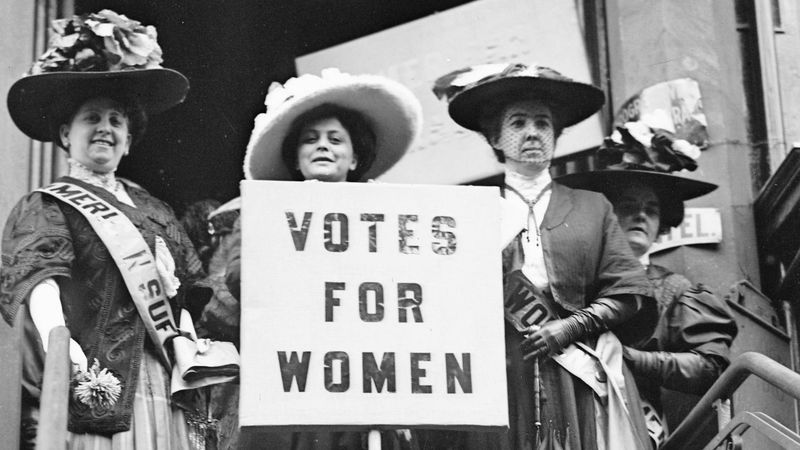
In 1920, amidst banners and placards, a diverse group of women marches with purpose, their signs boldly declaring ‘Votes for Women!’ These suffrage activists, with determination etched on their faces, fought tirelessly for the right to vote. Their march, a culmination of years of struggle, marks a pivotal moment in history.
The suffrage movement wasn’t just about voting rights; it was about equality and empowerment. These women, standing firm in their convictions, paved the way for future generations to have a voice and a choice in shaping society’s future.
15. A female pilot in full gear beside her biplane, 1927
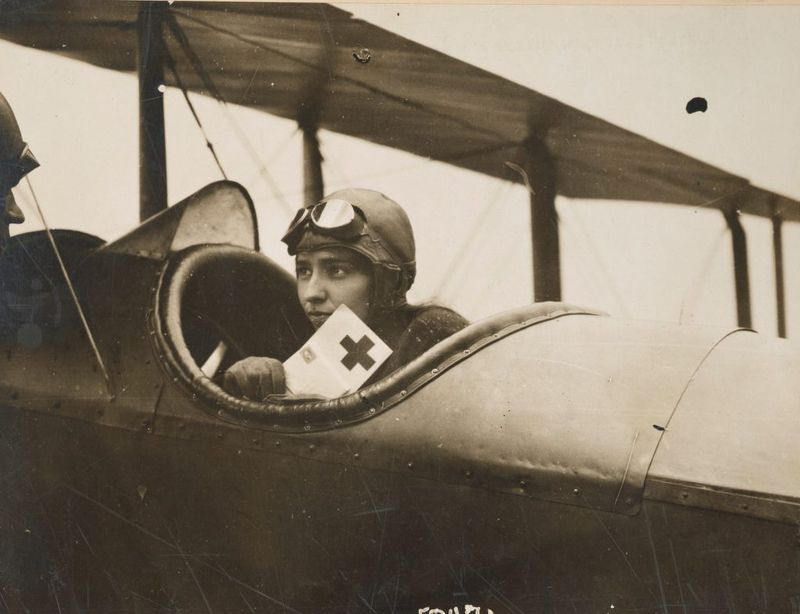
On an airfield in 1927, a female pilot stands with confidence beside her biplane, clad in full aviator gear. Her presence in this male-dominated field speaks volumes about the strides women were making. Aviation, the epitome of adventure and innovation, became a new frontier for women seeking to defy societal expectations.
Her goggles, leather jacket, and unwavering gaze embody the spirit of exploration and determination. For her, flying was more than a profession; it was a passion and a statement of breaking free from earthly boundaries.
16. Women in trousers working in a mechanic shop, 1926

In the gritty environment of a 1926 mechanic shop, women can be seen wearing trousers, a bold sartorial choice reflecting their practicality and readiness to engage in traditionally male tasks. Their hands, smudged with grease, work deftly on engines, challenging gender norms and carving out new opportunities in skilled labor.
Trousers, once considered scandalous for women, became a symbol of the changing tides. These women, through their work, demonstrated resilience and adaptability, proving that talent and capability know no gender.
17. An all-women news team typesetting a local paper, 1923

In the bustling atmosphere of a 1923 newsroom, an all-women team diligently works on typesetting the latest edition of a local paper. Their focus and skill are evident as they handle the intricacies of the printing press, a task requiring precision and expertise. This scene reflects the broader shift towards gender equality in professional spaces.
For these women, working in journalism was not just about reporting news; it was about shaping narratives and influencing public opinion. Their presence in the newsroom was a testament to the breaking of barriers and expanding roles for women.
18. Young female students at Oxford University, 1925

Within the historic walls of Oxford University in 1925, young female students walk with purpose, their academic attire reflecting their pursuit of knowledge and equality. Gaining access to higher education was a significant milestone, symbolizing broader societal changes.
These students, with books in hand and ambition in their hearts, represented a new generation of educated women ready to contribute to fields previously dominated by men. For them, education was more than just a privilege; it was a powerful tool for change, shaping a future where women played an integral role in intellectual and professional spheres.
19. A librarian in her long cardigan, organizing knowledge one card at a time, 1921

In the quietude of a 1921 library, a dedicated librarian methodically organizes a card catalog, her long cardigan swaying with every movement. Her role, crucial in the dissemination of knowledge, underscores the importance of women’s contributions to education and literacy.
Each card she handles represents a gateway to information, a testament to the librarian’s meticulous nature and commitment. For her, the library was more than a workplace; it was a sanctuary of learning and discovery, where she could inspire others to embark on their own intellectual journeys.
20. Female police officers in uniform, New York City, 1924

In the vibrant streets of 1924 New York City, two female police officers stand proudly in their uniforms, embodying the law and order they uphold. Their presence in a field dominated by men challenges the status quo and redefines what it means to serve and protect.
These officers, with their determined expressions, symbolize strength and resilience, proving that women could excel in roles demanding authority and courage. For them, being police officers was not just a job; it was a commitment to justice and an opportunity to pave the way for future generations of women in law enforcement.
21. Women sharing tea on the porch—gossip, laughter, and freedom, 1920s
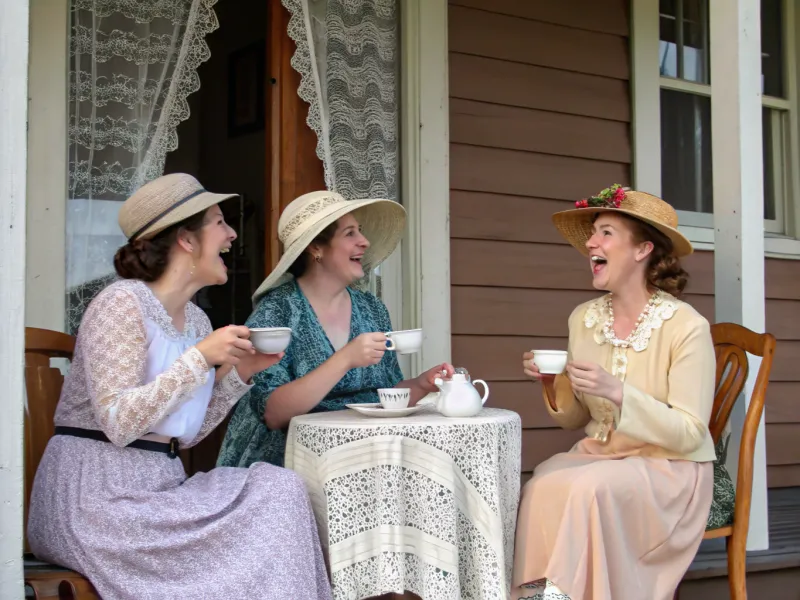
On a wooden porch bathed in the golden glow of an afternoon sun, a group of women gathers around a tea set, sharing stories punctuated by laughter. Their conversation, filled with gossip and shared wisdom, is a cherished ritual. For these women, tea time was more than a break; it was a celebration of friendship and the freedom to express their thoughts without restraint.
This scene, a tableau of warmth and camaraderie, captures the essence of everyday life in the 1920s, where simple pleasures and strong bonds were the cornerstones of happiness.
22. Two best friends in their Sunday best, arms linked, 1928
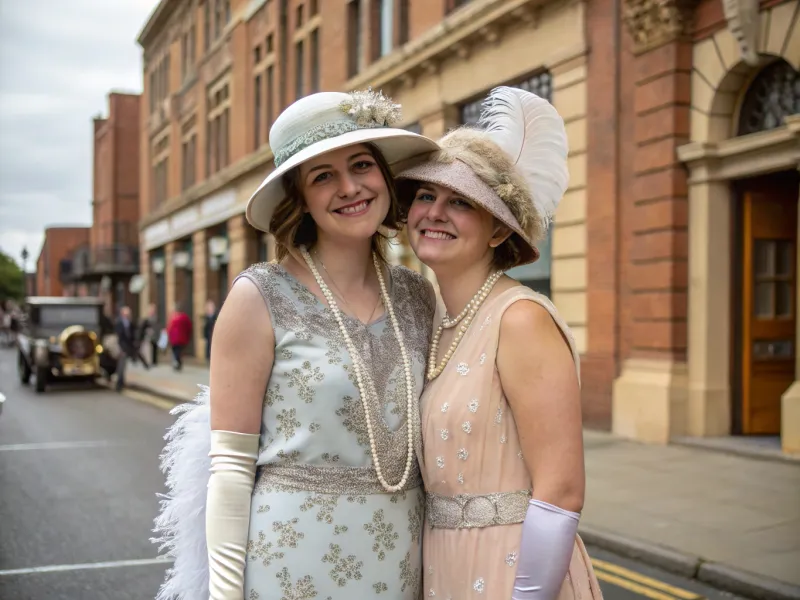
In the serene atmosphere of a 1928 Sunday, two best friends walk arm in arm, their elegant attire reflecting the day’s significance. Their smiles, radiant and genuine, speak of a bond forged through shared experiences. Sundays were a time for dressing up and attending church or social gatherings, a tradition that offered both spiritual and social fulfillment.
These friends, with their arms linked, symbolize the enduring power of friendship and the joy of shared moments. For them, Sundays were not just about appearances but about strengthening the ties that bind them.
23. Mother and daughter sewing side by side, 1922

In the quiet comfort of their home, a mother and daughter sit side by side, their hands skillfully guiding fabric through a sewing machine. This act of creation, shared across generations, is more than just a practical skill; it’s a bonding experience, a passing down of tradition and love.
The whir of the machine accompanies their soft conversation, a melody of familial connection. For this mother and daughter, sewing is not just a task; it’s a shared journey, stitching together memories and life lessons with each meticulous thread.
24. A woman reading alone in a park—an act of independence, 1923

In the tranquil haven of a 1923 park, a woman sits alone on a bench, absorbed in the pages of a book. Her solitude is a source of strength, a quiet declaration of independence in a world that often demanded conformity. Reading, an act of personal enrichment, allows her to explore new worlds and ideas, a luxury that was becoming increasingly accessible to women.
Her presence in the park, serene and self-assured, challenges the notion that women must always be accompanied or occupied with domestic duties. For her, this moment of solitude is a cherished freedom.
25. Ladies at a picnic, sipping lemonade and rocking bold lipstick, 1926
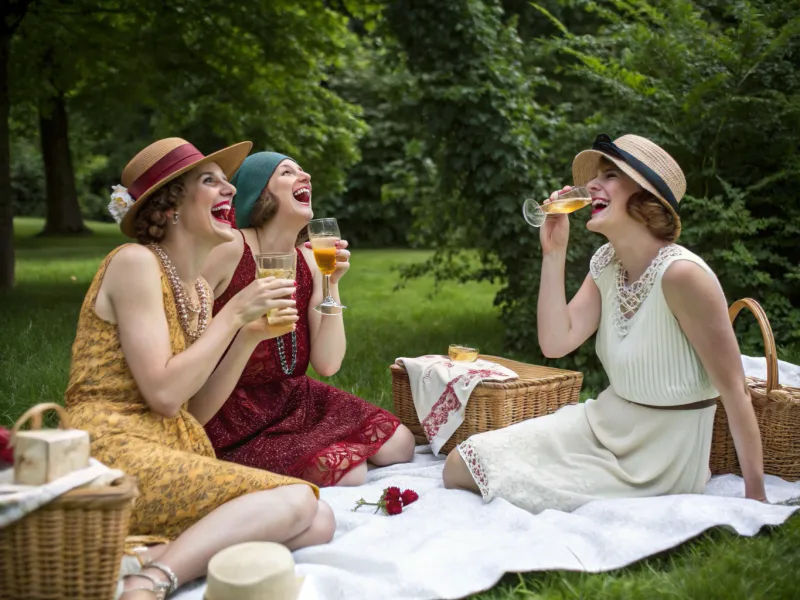
Under the canopy of a clear 1926 sky, a group of women gathers for a picnic, their laughter mingling with the gentle rustle of leaves. They sip on lemonade, its tangy sweetness a perfect complement to the warmth of the day. Their bold lipstick, a splash of color against the natural backdrop, speaks of confidence and flair.
Picnics were a popular pastime, offering a chance to relax and enjoy each other’s company away from the hustle and bustle of daily life. For these women, it was a moment to celebrate friendship and the simple joys of life.
26. A woman fixing her own bicycle chain, in heels, 1925

On a bustling 1925 street, a woman pauses to fix her bicycle chain, her heels clicking against the pavement. This simple act, a testament to her resourcefulness and self-reliance, challenges the assumption that women needed assistance for such tasks.
Her attire, a blend of practicality and style, reflects the evolving role of women in society—one where capability and fashion coexisted. For her, the bicycle was not just a mode of transport but a symbol of freedom, embodying the spirit of independence and adventure that defined the decade.
27. Sisters walking through town, one in overalls—already pushing norms, 1927

In the vibrant streets of a 1927 town, two sisters walk side by side, their contrasting outfits a reflection of individuality and change. One sister, in traditional attire, complements the other, who boldly wears overalls—a garment once reserved for labor. Their confident strides speak of solidarity and the courage to challenge societal expectations.
Overalls, practical and revolutionary, symbolized a shift towards gender equality in fashion. For these sisters, walking through town was not just a daily routine; it was a statement of defiance and unity, embracing change one step at a time.
28. A woman posing next to her dog and gramophone—peak solo joy, 1921
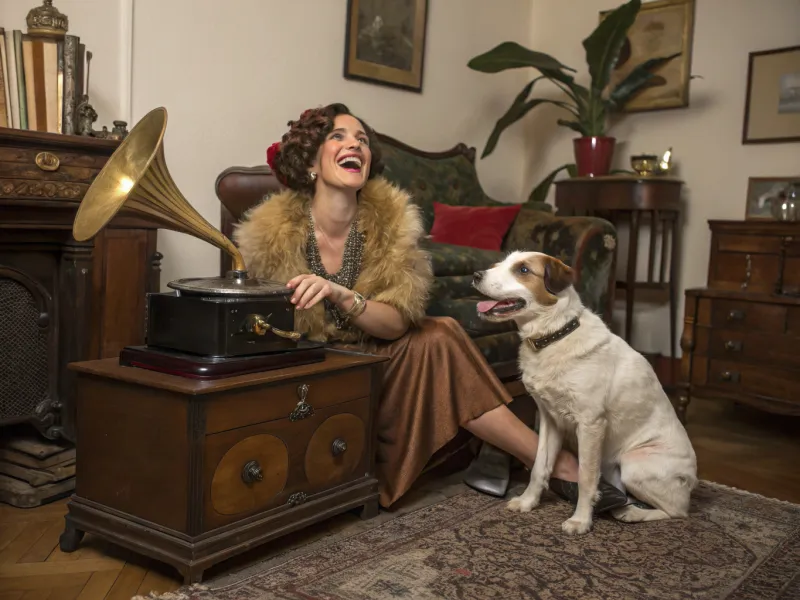
In the cozy confines of her 1921 living room, a woman poses with her two beloved companions—a loyal dog and a prized gramophone. Her smile radiates pure joy, a testament to the simple pleasures of solo life. The gramophone, playing a lively tune, fills the room with music, while her dog sits faithfully by her side.
For her, these moments of solitude are not lonely but liberating—a chance to enjoy the company of music and a loyal friend. This scene captures the essence of self-contentment and the joy found in everyday moments.
29. Women on a rooftop laughing at nothing and everything, 1929
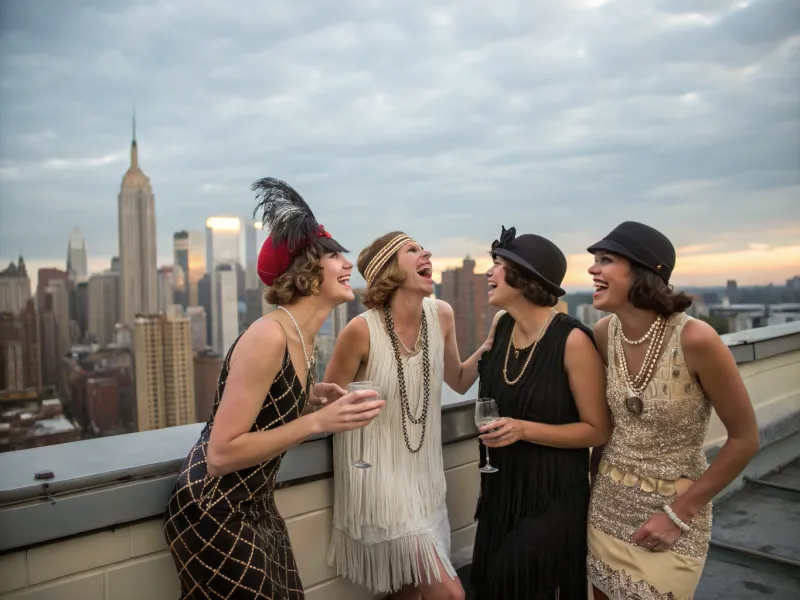
On a 1929 rooftop, the world below seems distant as a group of women laugh freely, caught in a moment of shared joy. Their laughter, unrestrained and infectious, echoes against the urban skyline. This rooftop gathering, spontaneous and genuine, reflects a camaraderie forged through shared experiences and dreams.
For them, being together in this elevated space symbolizes rising above the mundane, embracing each other’s company without pretense. The cityscape serves as a backdrop to their laughter, capturing a timeless moment of friendship and freedom.
See also: 28 Rare Vintage Wedding Photos from Days Gone By
30. A young woman holding her college diploma with pride, 1922

In the verdant expanse of a 1922 university campus, a young woman stands proudly with her college diploma in hand. Her achievement, the result of years of dedication and hard work, represents a significant milestone in a time when higher education for women was still a burgeoning reality.
The diploma, a symbol of her perseverance, underscores the shifting landscape of gender roles in academia. For her, education is not just an accomplishment but a key to unlocking new doors, paving the way for future generations to pursue their own aspirations.
31. A smoky jazz club with women musicians front and center, 1924

In the dimly lit ambiance of a 1924 jazz club, the air is thick with smoke and anticipation. Women musicians, front and center, command the stage with a captivating blend of rhythm and melody. Their performance challenges traditional gender roles, proving that talent knows no bounds.
The music, a vibrant expression of the era’s cultural renaissance, echoes through the room, drawing the audience into its soulful embrace. For these women, jazz is more than a genre; it’s a platform for self-expression and a testament to their place in the world of music.
32. Burlesque performers backstage—bold, fearless, and funny, 1926

In the vibrant backstage hustle of a 1926 burlesque show, performers prepare with bold costumes and makeup. Their laughter mingles with the rustle of feathers and sequins, a prelude to the fearless entertainment they are about to deliver. Burlesque, an art form both daring and comedic, empowered women to explore and express their sexuality with confidence and humor.
For these performers, each show was an opportunity to challenge societal norms and embrace their individuality. The backstage, a sanctuary of camaraderie and creativity, was where their radiant personas came to life.
33. Flappers clinking glasses at midnight on New Year’s Eve, 1929
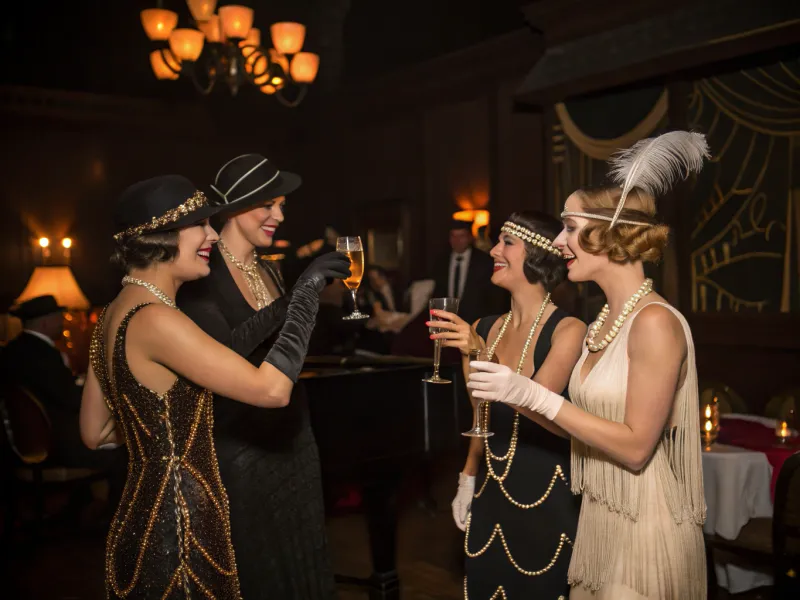
As the clock strikes midnight on New Year’s Eve 1929, a group of elegantly dressed flappers raises their glasses in joyous celebration. The clinking of crystal echoes the promise of a new year, filled with hope and adventure. For these women, the transition into 1930 is not just a calendar change but a chance to reflect on the triumphs of a decade that redefined womanhood.
Their laughter and camaraderie capture the essence of the Roaring Twenties—a time of liberation, innovation, and bold self-expression. This moment, both festive and reflective, marks the end of an era and the beginning of new possibilities.
34. A woman alone at a bar—confident and curious, 1925

In the dimly lit elegance of a 1925 bar, a woman sits alone, confidently sipping her cocktail. Her solitude is a statement of independence, an embrace of her own company in a society unaccustomed to seeing women unescorted in such spaces.
Her curiosity about the world around her is evident in her poised demeanor and observant gaze. For her, the bar is not just a place to drink; it’s a venue for contemplation and connection, where she can explore new social landscapes while remaining true to her own path.
35. Silent film star Clara Bow getting ready in her dressing room, 1928
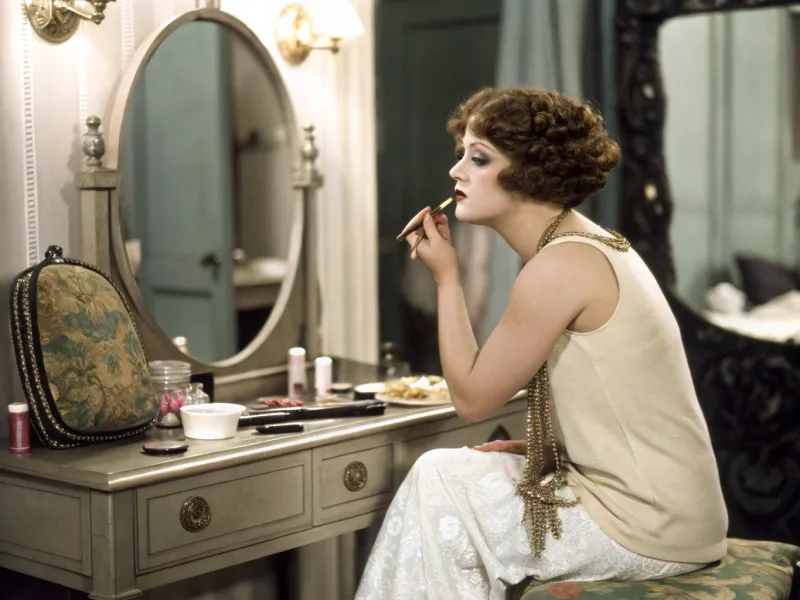
In the intimate setting of a 1928 dressing room, silent film star Clara Bow prepares for her next scene, her reflection revealing both glamor and grit. As she applies makeup, her iconic image as the ‘It Girl’ of the era comes to life. Clara Bow embodied the flapper spirit—independent, charismatic, and irresistibly charming.
In a time when Hollywood was shaping modern culture, she captivated audiences with her expressive performances and undeniable allure. Her dressing room, a sanctuary of transformation, reflects both the spotlight’s intensity and the personal dedication behind her success.
36. Two women in tuxedos at a costume party—gender roles? What roles?

Amidst the revelry of a 1920s costume party, two women confidently don tuxedos, a playful defiance of traditional gender roles. Their choice of attire, sharp and sophisticated, blurs the lines of convention, challenging societal expectations with grace and humor. The tuxedo, a symbol of masculinity, is reimagined through their confident expressions and stylish flair.
For these women, the party is an arena of self-expression, where they can explore their identities and celebrate diversity. Their presence, both bold and elegant, speaks volumes about the era’s evolving attitudes toward gender and individuality.
37. A woman painting on canvas in her sunlit studio, 1923
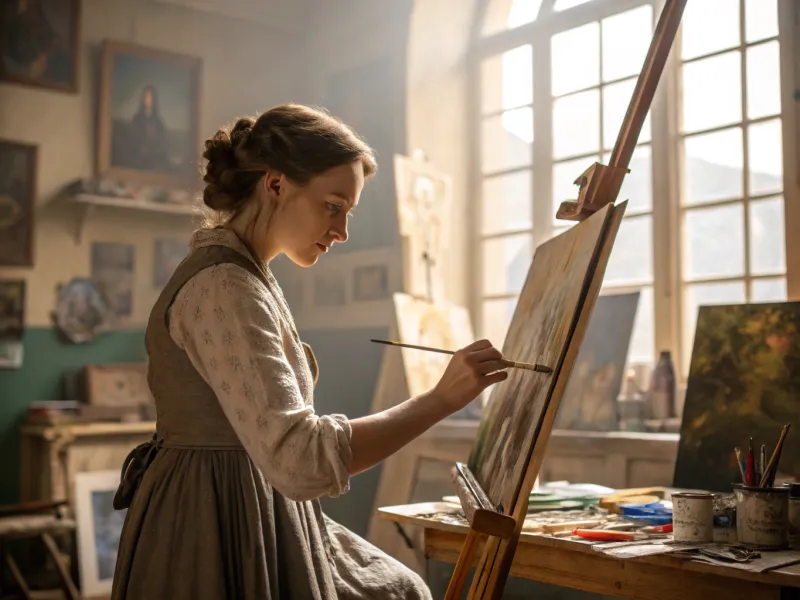
In the serene light of a 1923 art studio, a woman stands before her canvas, brush in hand, immersed in the world of color and creativity. The sunlight streaming through the windows illuminates her focus and dedication. Painting, for her, is not just an art form but a means of self-expression and exploration.
Her studio, a sanctuary of inspiration, offers a space where she can translate her visions into reality. For this artist, each stroke of the brush is an adventure, a journey into the depths of imagination and the joy of creation.
38. Bohemian artists lounging at a café in Paris, 1927

In the lively atmosphere of a 1927 Paris café, a group of Bohemian artists gathers to share ideas and inspiration. Their conversation, filled with passion and creativity, reflects the vibrant cultural renaissance defining the era. As they sip coffee and exchange sketches, the café becomes a hub of artistic exploration, a sanctuary for free-spirited thinkers.
For these artists, Paris is not just a city but a canvas of endless possibilities, where each café visit fuels their creative pursuits. This scene captures the essence of Bohemian life—vibrant, unconventional, and richly textured.
39. A suffragette-turned-socialite holding a cigarette holder like a sword, 1926

In the opulent setting of a 1926 social gathering, a suffragette-turned-socialite holds her cigarette holder with a regal flair, as if wielding a sword. Her presence, both sophisticated and commanding, reflects the journey from activism to high society.
Once marching for votes, she now navigates the intricate dance of social circles, yet her commitment to progress remains unwavering. The cigarette holder, a symbol of elegance and defiance, mirrors her dual identity as a champion of change and a connoisseur of life’s finer pleasures. Her story is one of transformation, resilience, and grace.
40. A woman with a fierce stare, camera in hand—documenting her world, 1929

In 1929, amidst a world in flux, a woman stands with a camera, her gaze fierce and determined, ready to document her world. Photography, a medium once dominated by men, becomes her voice, capturing the nuances of everyday life and the extraordinary moments that define her era.
Her camera, an extension of her vision, allows her to explore and express unique perspectives. For her, each photograph is a testament to the power of observation and the beauty of life as it unfolds. Her work, both artistic and journalistic, immortalizes the spirit of a generation unafraid to see and be seen.
41. A Woman Riding the Subway with a Newsboy Cap, 1926

With the rhythmic clatter of the subway, a young woman sits poised, her newsboy cap tilted just so. It’s 1926, and the hustle of city life pulses around her. Her stylish coat defies the chill, a testament to her independence.
Surrounded by the daily commuters, she embodies modernity—a new kind of commuter in a rapidly changing world.
Her presence in this public space is a significant shift from previous decades, marking women’s growing independence in urban landscapes. This scene encapsulates the era’s spirit of liberation and the breaking of traditional gender roles.
42. Women Competing in a Bicycle Race, 1925
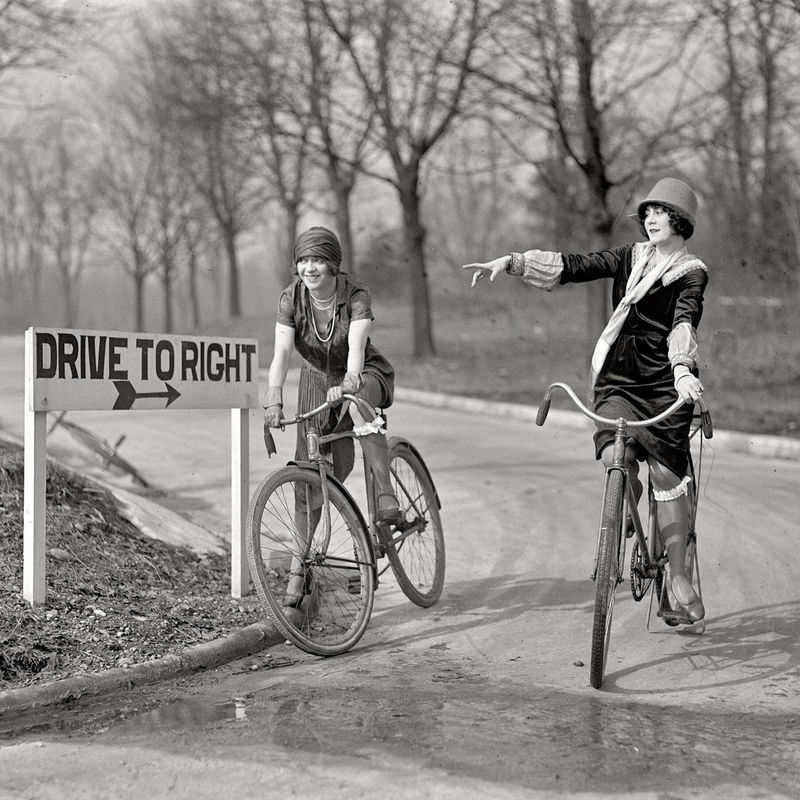
Pedals whirl furiously as two women race down the dusty track, skirts flapping in the breeze. It’s 1925, and the thrill of competition is palpable. These women defy convention, embracing both speed and freedom.
The crowd roars, a testament to the growing acceptance of women in sports. Their attire, practical yet stylish, symbolizes a shift toward functionality in fashion.
This race is more than sport; it’s a statement, a challenge to societal norms. In every rotation of their wheels, there’s a push against the constraints of the past, embodying the spirited determination of the 1920s.
See also: 30 Wild & Wonderful Ways Women Had Fun In The 1950s (Without A Single Selfie)


